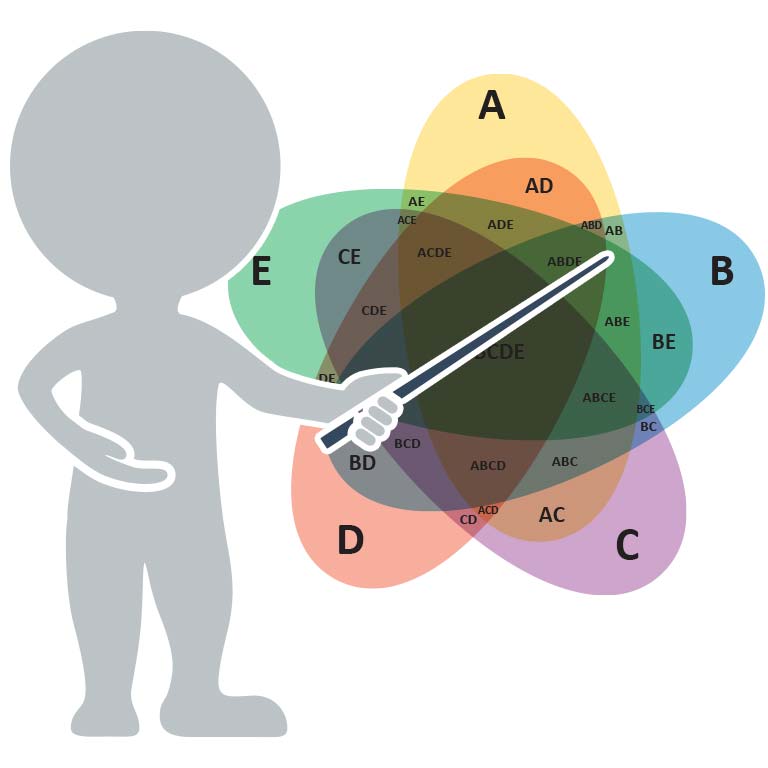Who are these musician people anyway? They’re usually seen dressed in black like some sort of formal super hero with a secret identity we never get to learn. Today’s Take a Friend to Orchestra contribution comes from one of those formal super heroes, Charles Noble, the Assistant Principal violist for the Oregon Symphony. His contribution serves to strip away some of the mystery so you can see that they have alter egos just like everyone else.
If you’re fortunate enough to already know some of the musicians in your local orchestra, make sure you try to find an opportunity where you can meet up with them at some point in the concert event and introduce them to your friend.
Have you ever run into a member of your local orchestra in the
grocery store and actually known their name or recognized their face?
Really? Was it because they were still wearing their concert clothes?
What if they were in street clothes? Would you still recognize them?
Chances are, it might prove to be a little more difficult without the
wardrobe assistance.
I’m often struck by the level of anonymity that one can have as the
member of a professional orchestra. Not to every member of the
audience, granted, because there are the people in the first ten rows
of the main floor who basically see the same people from less than 20
feet away for ten or more weeks per season. There are relatives and
friends of the musicians who come to concerts (ah, the lure of free
tickets!). Unless you are the concertmaster (tuning the orchestra
counts for major recognition) or a principal player who has a prominent
solo in a piece on the concert, chances are, you’re not going to be
that well-known to the average concertgoer.
What does all of this have to do with taking a friend to the
orchestra? Well, I think that by knowing that you’re not watching the
monolithic unit called the Insert-name-here
Philharmonic/Symphony/Orchestra, but instead a collection of relatively
normal people who have many of the same problems, aspirations, and joys
that you do, but just loads more musical training, will help make the
first trip to the orchestra more enjoyable and less intimidating. And
because happy audiences make happy orchestras.
Next time you go to a concert (or the first time), scan the program
for the names of the musicians, then take a look at them as they warm
up and prepare for the concert. Notice how there will be little clumps
of conversation taking place as they come on stage. Yes, orchestras
have groups of friends and cliques, too. Gossip runs rampant in the
symphony orchestra: within ten minutes of an affair, illness, or job
dispute, at least half of the orchestra knows about it, and the other
half is lying. On average, there are 3 affairs, 4 divorces, and 2
pregnancies going on in any orchestra at any one time. There will be
several people being probated under dismissal proceedings. Someone has
cancer, another person just had their eyes done, and yet another is in
physical therapy for the ravages of tendinitis.
Look at those two string players – did you know that they have sat
together for twenty-five years, and they don’t speak to each other any
more? The clarinetist and flutist – they play tennis together every
Thursday morning. There is a violist who is a photographer, a cellist
who is a lawyer, and a double bassist who breeds and boards horses.
Can you see how the orchestra, which plays so well as a unit, is really
such a miracle?
There are anywhere between 85 and 105 musicians on stage who lead
totally separate, normal lives. They have the same issues as you and
I, but they come together under a conductor (don’t get me started!) and
unite as a single, multi-faceted organism. So the next time you go to
the symphony (or the first time you go) – take a little time and just
look at the people down there – and see the orchestral trees for the
forest.
– Charles Noble
Make sure you take a few moments to re-read that final paragraph and
let it rattle around in your head for awhile. How many times in our
lives do we wish that our coworkers, neighbors, or family members could
all come together to work in such a cohesive manner on a regular basis
yet have such different personalities?


